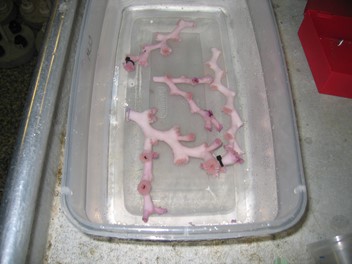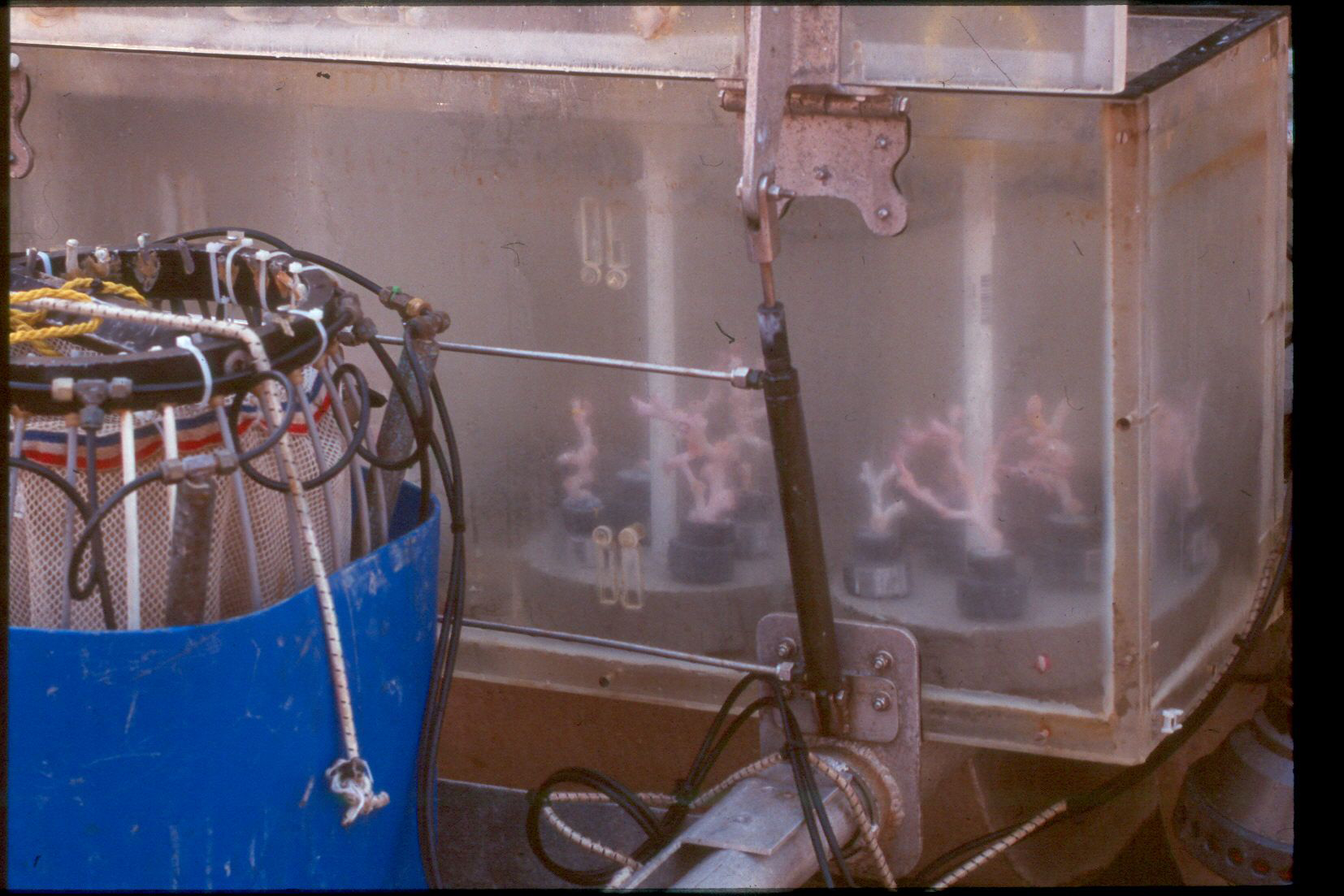Invertebrate Physiology
 The distribution of a species is influenced by a combination of larval supply and tolerance of different life stages to environmental variables such as temperature, salinity, oxygen, food etc. The early stages of a species are generally more sensitive to sub-optimal conditions than the adults, so larval tolerance to water temperature for example, may influence the distribution of a species just as much as that of the adults. My research has involved understanding the sensitivity of different life stages of invertebrates, primarily corals, to different physical variables such as temperature, sediment load and pH.
The distribution of a species is influenced by a combination of larval supply and tolerance of different life stages to environmental variables such as temperature, salinity, oxygen, food etc. The early stages of a species are generally more sensitive to sub-optimal conditions than the adults, so larval tolerance to water temperature for example, may influence the distribution of a species just as much as that of the adults. My research has involved understanding the sensitivity of different life stages of invertebrates, primarily corals, to different physical variables such as temperature, sediment load and pH.
Although the deep sea is generally less variable than shallow coastal regions, there are some places which can be quite dynamic, especially deep sea coral habitats. A combination of controlled laboratory experiments and in situ studies of the deep sea coral Lophelia pertusa, has shown that this coral can survive repeated rapid and significant changes in temperature and high levels of suspended sediment, at least in the short term. This resilience may have contributed to the widespread distribution of Lophelia. Other species are more sensitive to sub-optimal conditions, and these are the species that will be lost more quickly when environmental changes occur from natural or anthropogenic events.


